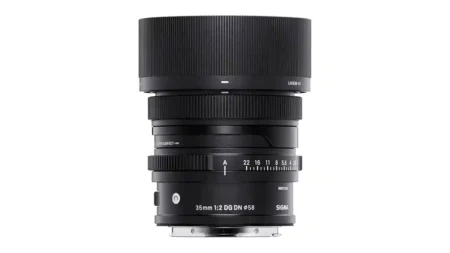Over the last few years, with the surge of mirrorless cameras on the market, I’ve often been asked about choosing between a mirrorless or DSLR systems for wildlife photography. Each has its own benefits and choosing between the two isn’t necessarily simple. So in this post, I’m going to break down the pros and cons to help decide what’s right for you.

The small form factor of mirrorless cameras makes them ideal for travel
Camera size
When mirrorless cameras first came onto the scene one of the big benefits people touted was the reduction in size and weight. It’s certainly true that my Nikon Z 6 weighs a lot less than my D850. And I’m thankful for that when I’m hiking long distances or packing for travel. In contrast though, as much as the weight reduction is nice, the ergonomics provided by the extra weight and size of a DSLR are, in some situations, rather preferable.
The larger camera balances well with longer lenses and heavy super telephotos, making them easier to hold and use. When using a smaller camera on the back of a big lens they feel front weighted and fatigue far more than when the load is balanced.
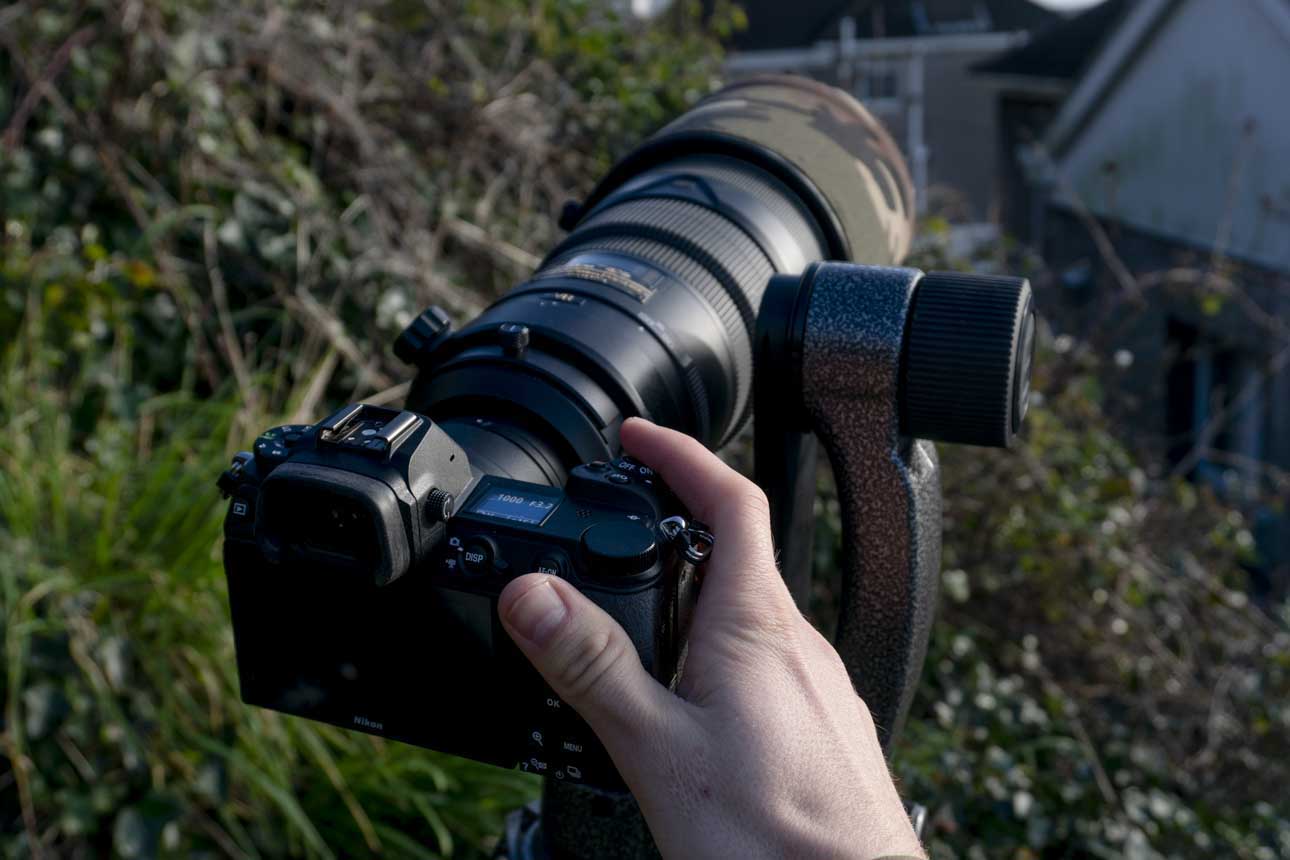
On a long heavy telephoto, lighter weight cameras will always seem front heavy, so working on a balanced gimbal can help solve this.
I think some mirrorless cameras also feel cramped when it comes to controls. Luckily, the Z 6 that I recently acquired has excellent ergonomics and button design, however, others are not as favourable in use. This means if you’re wearing gloves they can be fiddly to work with, not something you want when you only get fleeting moments to make adjustments and nail the shots.
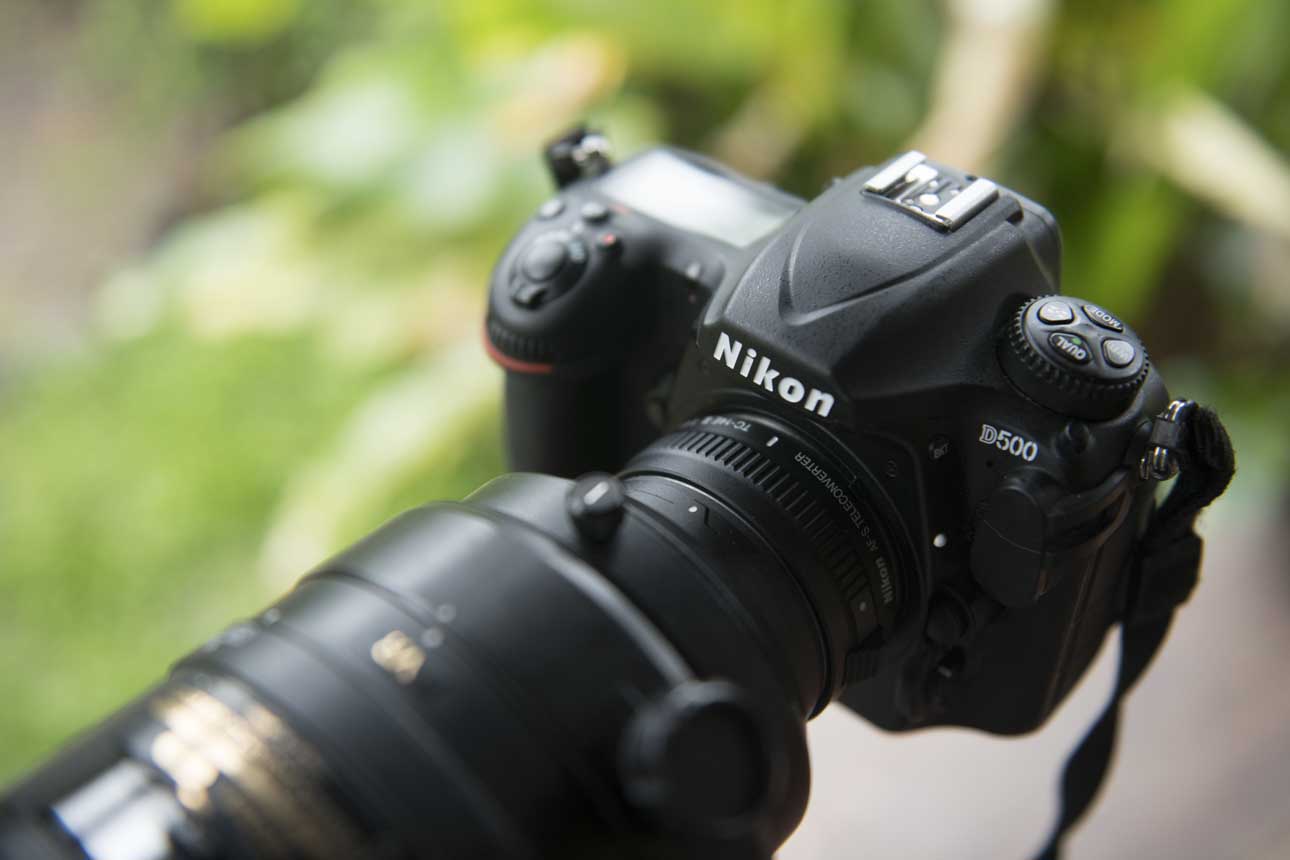
Larger, the DSLRs ergonomics aid working with larger lenses for better balance
Viewfinder experience
One of the major changes brought by mirrorless cameras is the switch from optical viewfinders (OVF) to electronic viewfinders (EVF). Again we find conflicting pros and cons for wildlife photographers.
Modern EVFs have come on a long way from the old grainy, low-rate handy-cam variants. High resolution and with excellent features such as focus peaking, zebras, live histograms, they provide a wealth of information that’s not possible in DSLR’s OVF.

Electronic viewfinders provide a number of new benefits such as focus peaking, zebras and live histograms to aid shooting
Getting a live readout, you can preview exposure to ensure its bang on before pressing the shutter release. This helps you feel confident in your exposures. In addition, EVFs make video recording far simpler, negating the need for additional viewfinders on the back of a DSLR. They allow you to focus, compose and shoot video even in bright sunlight. They also have focus and exposure aids to ensure your footage is perfect.
In a similar theme, an EVF is also great for reviewing still images in bright conditions. It allows you to check focus, exposures etc without the glare of a rear screen.
While this all seems brilliant, OVFs still has some benefits. For example, some EVF’s on the market still have a small amount of lag. It might seem tiny when framing up a landscape or even a street scene, but when following a fast moving bird, it can make things tricky.

The old faithful OVF with no lag or backlighting can be useful when working with fast moving wildlife in low light
In low light, the OVF can also provide a much nicer viewing experience. As it’s not backlit, the light visible through the finder is equal to the ambient light, helping to reduce eye strain.
In addition, if you are working for long hours on a stakeout viewing through the finder, the EVF requires power, where an OVF doesn’t. That means you can watch for your subjects without depleting your batteries.
Autofocus
When it comes to autofocus DSLRs and mirrorless cameras work in different ways. Many modern mirrorless cameras use phase detection that’s built into the sensor design, whilst most DSLRs use a separate module to control focus.
In regards to AF performance, the new breeds of mirrorless cameras have come on leaps and bounds, being able to focus very well in most situations. Some also work with thousands of AF points to get accurate focus on the intended subjects. They’re also able to transition between points smoothly and maintain focus, which is highly useful when filming.
As far as they have come, the area where some mirrorless cameras start to lag behind DSLRs is with tracking focus. I think top class DSLRs are still ahead when it comes to speed and accuracy on moving subjects. Although there are a few exceptions such as the Sony A9 and the Olympus OM-D E-M1 II and E-M1X are starting to prove popular for wildlife photography.
In flagship DSLRs, dedicated AF processors enable fast reactions to keep up with moving subjects. That’s very important for wildlife photographers trying to keep up with super-fast-moving action.
In the real world, however, after using the Z6 over the last few months, I find the AF tracking performs well in most cases. It’s easily good enough to capture birds in flight and moving subjects. However, when I know action is the order of the day, I’ll still be reaching for my D850 or D500.

When it comes to action, a DSLR’s focus tracking still rocks for nailing fast-moving subjects
Video
Video is where mirrorless cameras certainly have an advantage. The built-in EVF allows for easy viewing whilst recording, with features such as focus peaking and live histograms allowing for great control over our videos.
The AF for video is also worlds apart, with the on-sensor AF of mirrorless cameras being far more reliable, smooth and accurate for following focus whilst filming. It’s especially true when using native lenses with stepping motors for super smooth results.
In-body stabilisation also enables you to record whilst hand holding the camera with far better results than in DSLRs. That’s a major benefit for run and gun shooters, or when you want to capture a quick clip of wildlife and you don’t have the time to get the tripod set up!
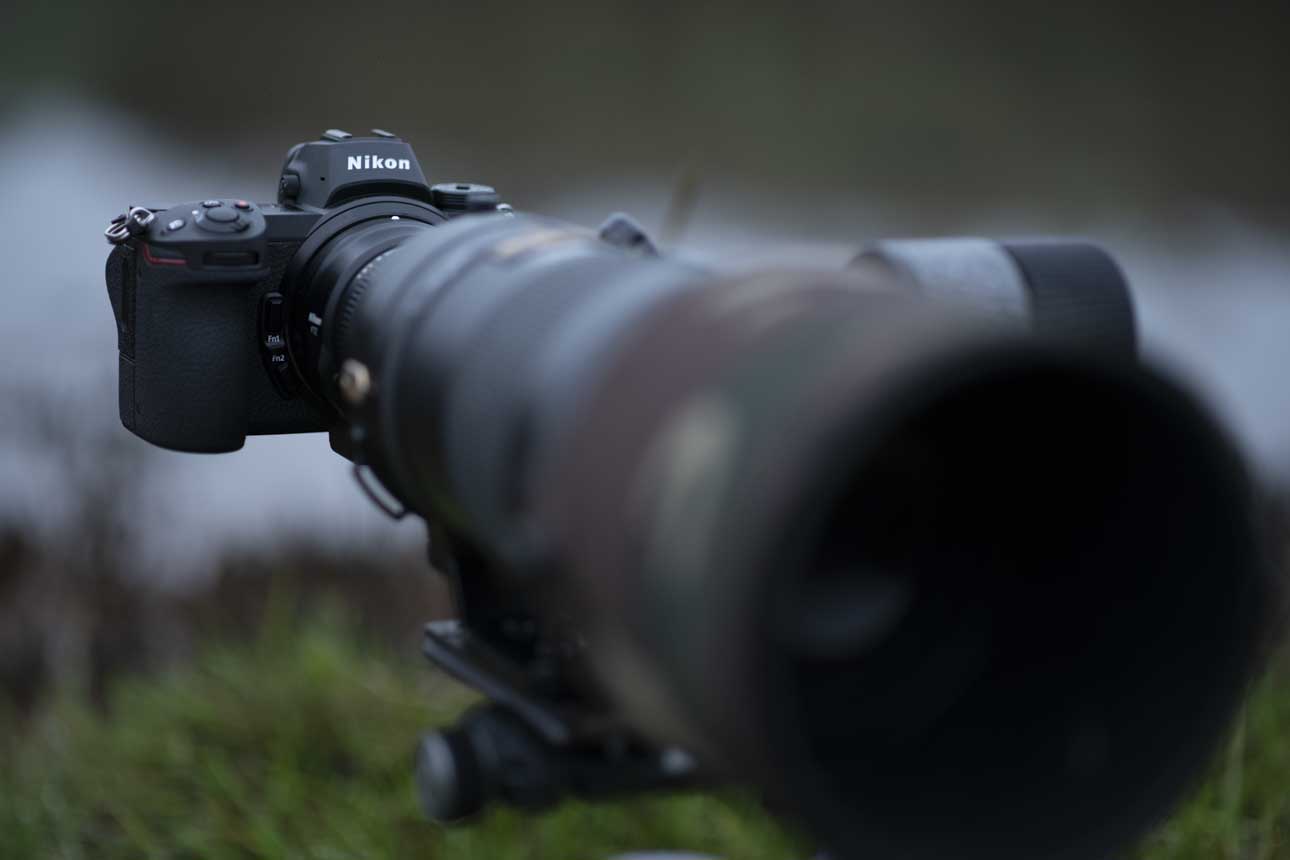
Optimised for hybrid shooting, mirrorless cameras are ideal for those wanting to both shoot stills and video
Price and value
When it comes to investing in gear, price is always a consideration. In regards to new cameras, flagship DSLRs and mirrorless cameras tend to be comparable in price if you’re after the latest and greatest.
DSLR models in the semi-pro bracket, however, will likely provide a better price to spec value than mirrorless for wildlife photographers. I think they also have better AF for tracking subjects, overall build quality and ergonomics for stills shooting.
Another consideration, of course, is lenses for wildlife. Most mirrorless systems are not as fully fledged as DSLR ecosystems. Native long primes are few and far between for mirrorless cameras, whereas the more exotic lenses, used by most wildlife photographers are readily available for DSLRs. That’s a major consideration.
A final note is that with the abundance of pro level and semi-pro level cameras on the used market, DSLRs with the specs that us wildlife shooters are after can be found at a far more affordable price point. Add to this the high number of lenses available both used and new for the DSLR mounts, it’s far more affordable to get into the wildlife game with a DSLR.

Working with the Z 6, I had no problems locking focus on this small turnstone moving along the shoreline
Conclusions
Mirrorless cameras are here to stay and for us wildlife photographers they really do add some exciting potential for the future.
The advanced feedback from an EVF is amazing when you’re out shooting. Plus there’s the potential for completely silent shooting. And advanced video features really do offer some exciting possibilities.
The new breed of autofocus systems have also come on tremendously, enabling mirrorless cameras to almost keep up with the best DSLRs, making them a great option for nature photographers looking to work in a variety of mediums.
However, as much as the new tech is fantastic, the old dependable DSLR still certainly holds its own. AF speed and performance when tracking moving subjects, no viewfinder lag and to my mind, the ergonomics, still make them stand out when working with wildlife.
The variety of available lenses and just pure reliability make them workhorses in the field and is the reason that as yet, most of us pros are still working with them.
Deciding what to invest in comes down to a number of key areas to draw some conclusions.
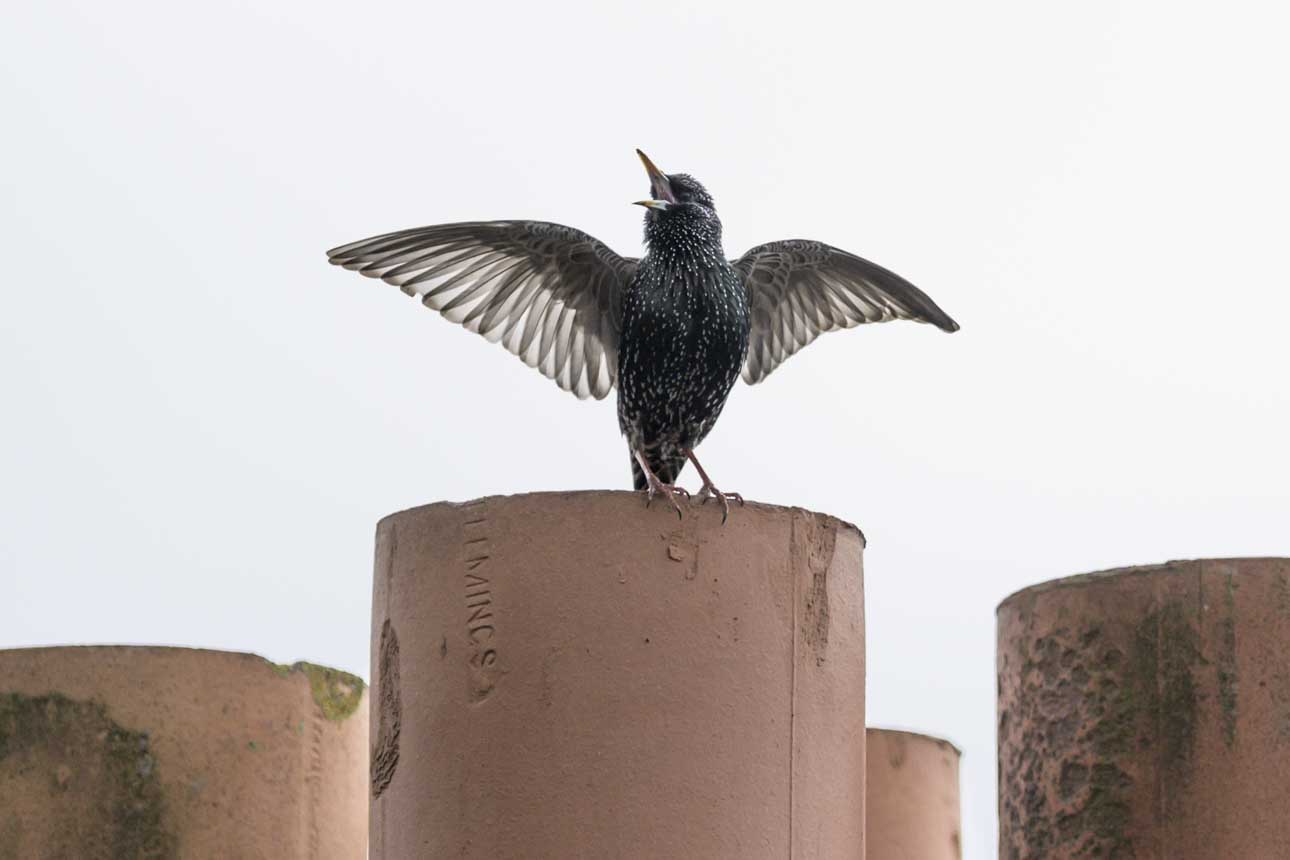
The live histogram in my Z 6 was really useful for judging the exposure on this backlit starling surrounded by white
Deciding Factors
If video is something you want to shoot alongside stills, then the new breed of mirrorless cameras make that a significantly easier job (It’s why I bought myself a Nikon Z 6). The EVF, as well as the better video features, make a flagship mirrorless system a no brainer.
If ultimate performance for tracking fast moving birds and wildlife is your focus then I think the AF performance of most DSLRs is more reliable. Whenever I am working with fast-moving subjects my D850 or D500 is always my go to.
If weight and size are important then the mirrorless systems will certainly help you reduce bulk, yet still provide you with a top class photographic experience. However, remember larger cameras are not always a negative with big lenses.
If cost is a major consideration, you’ll find far better value in DSLRs for wildlife photography. Lower tier DSLRs offer AF performance that enables you to keep up with some of the latest mirrorless offerings. There are also more used DSLRs available with pro levels specs at consumer prices.
As it stands, I think a DSLR still provides the best tool for wildlife photography. However, I’m using my Nikon Z 6 more and more. I’m finding that some of the mirrorless advantages are proving useful and on days when I only want a single camera, yet I know I might want to shoot stills and video, the Z 6 is my choice.
If I could only pick one camera for my work, and with still images being my true passion, I’d find it very hard to trade in my D850 for a camera without a mirror. Its reliability, focus and workhorse dependability still make it pretty much the perfect tool for wildlife photography!


